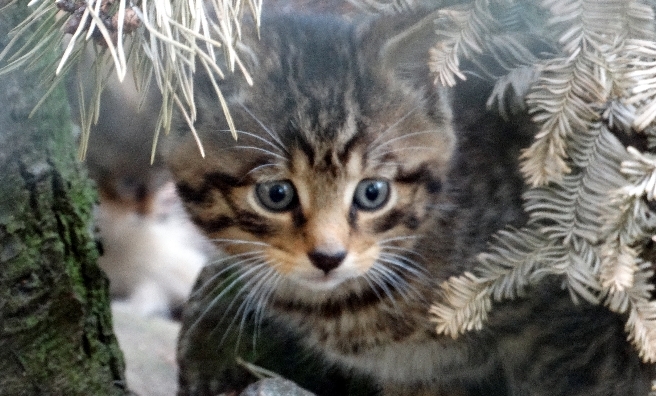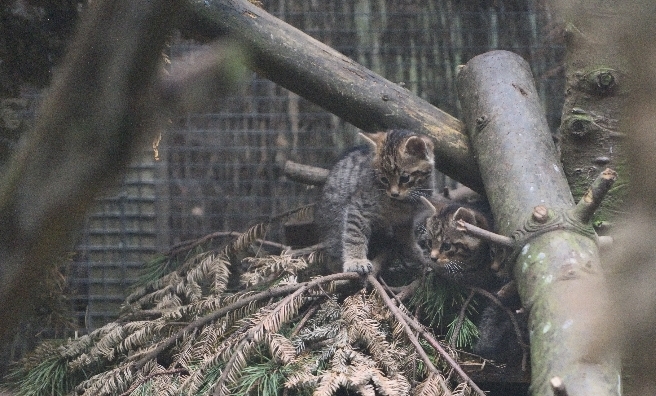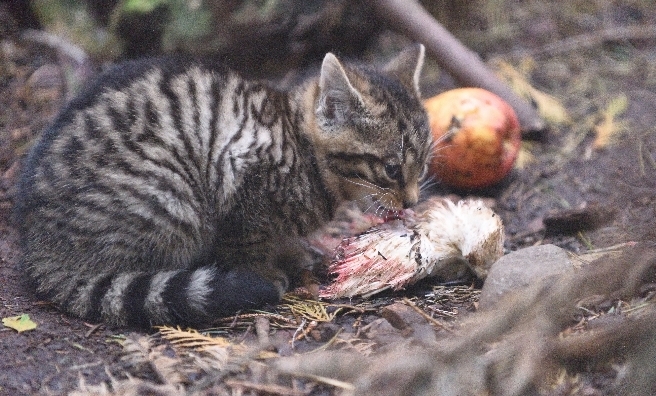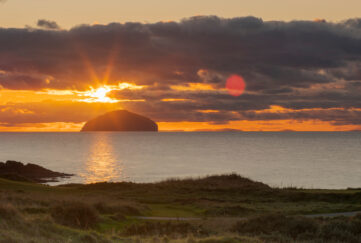Scottish Wildcat Kittens – Helping To Save The Species
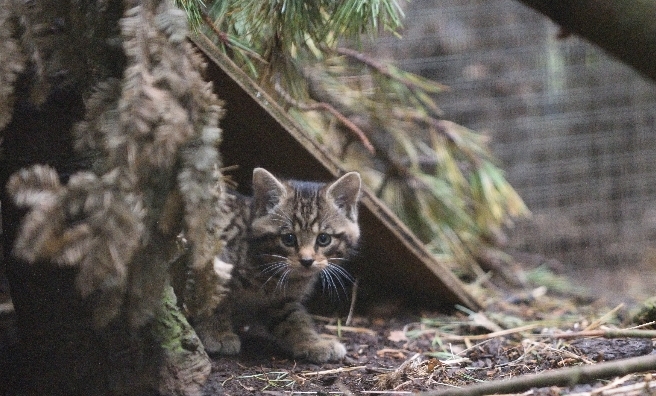
An important step in the conservation of the Scottish Wildcat has been taken with the appearance of two litters of kittens at the Royal Zoological Society of Scotland’s Highland Wildlife Park near Aviemore.
Also known as the ‘Highland Tiger’, this incredibly rare native species is facing the very real threat of extinction due to hybridisation with domestic and feral cats, habitat loss and accidental persecution. However, as a result of co-ordinated conservation efforts and a conservation breeding programme for eventual release, the species now has a fighting chance of survival – and these kittens will play a vital role in this.
‘We are doing everything we can to save the Scottish wildcat’
“The birth of these rare kittens is not just another boost for the captive breeding programme but for the conservation of this magnificent native species as a whole,” said David Barclay, RZSS Cat Conservation Project Officer.
“Through our work with Scottish Wildcat Action, we are doing everything we can to save the Scottish wildcat from extinction, with the safety net of the captive breeding programme becoming more and more vital as wild populations continue to decline.
“We have recently developed an off-show breeding facility for the wildcats, one of the largest of its kind in the world for small cats. Through the conservation breeding and pre-release training programme, we will eventually use captive born wildcats to carry out reintroductions across Scotland.”
One of the rarest cat species in the world
The Scottish wildcat is one of the rarest cat species in the world. Wildcats prefer to live alone but will come together for a short period for breeding, normally giving birth to two or three kittens, which the mother will protect fiercely.
The kittens at the Highland Wildlife Park have spent the first couple of months safely tucked in their dens but have been venturing out more over the last few days. The playful behaviour that park visitors can watch between mother and offspring is not just important for their relationship but vital for the kittens to learn key behaviours.
Securing the future of Scotland’s last remaining native cat species
RZSS Highland Wildlife Park has a strong track record in breeding the Scottish wildcat, helping to maintain a healthy captive population and establishing a conservation breeding for release programme, which will be critical in securing the future of Scotland’s last remaining native cat species.
RZSS is a key partner in Scottish Wildcat Action, the first national project to save the highly endangered Scottish wildcat from extinction. Scottish Wildcat Action brings together more than 20 other organisations in the conservation, scientific and land management communities – supported by Scottish Government and the Heritage Lottery Fund – and represents the best chance the wildcat has of surviving in the long term.
- A stunning wildcat kitten. Photo courtesy of RZSS/Jan Morse
- Exploring the trees! Photo courtesy of RZSS/Alex Riddell
- Lunch time for one of the wildcat kittens. Photo courtesy of RZSS/Alex Riddell
- Peek a boo! Photo courtesy of RZSS/Alex Riddell
Scottish Wildcat Action
The Scottish wildcat is critically endangered in the wilds of Scotland.However, thanks to Scottish Wildcat Action, the only national action plan for the species, the future looks brighter for this iconic species.
Scottish Wildcat Action is a six year plan which aims to reduce threats in wildcat priority areas, breed wildcats for later release and contribute to better understanding through new research:
Wildcat priority areas: Six wildcat priority areas have been identified – Strathpeffer, Strathbogie, Northern Strathspey, Angus Glens, Strathavon and Morvern.
Conservation breeding: Across the rest of the Scottish Highlands, Scottish Wildcat Action is working with land owners to create a stable population of wildcats through breeding for later release.
Research and monitoring: Scottish Wildcat Action is also committed to conducting extensive research and monitoring of wild-living cat populations to build knowledge and understanding.


